Related Research Articles

Varuna is a Hindu god, associated with the sky, oceans and water. In the Vedic scriptures, he is paired with the god Mitra and is the lord of Ṛta (justice) and Satya (truth). Varuna is also mentioned as an Aditya, the sons of the goddess Aditi.

Islam is the third largest religion in Sri Lanka with about 9.7 percent of the total population. The main muslim concentrations occur in Eastern Province. Other areas with significant population, such as western, north western, north central, central and sabaragamuwa areas of, srilanka. Muslims form a large segment of urban population and mostly concentrated in major cities and large towns in srilanka. The Muslims usually speak Tamil language in Sri Lanka.
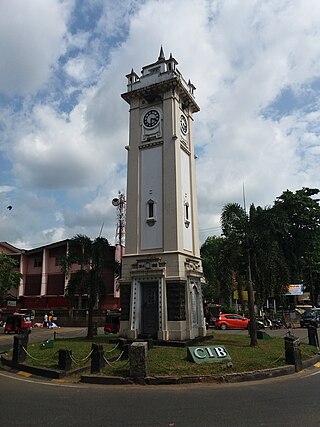
Ratnapura is a major city in Sri Lanka. It is the capital city of Sabaragamuwa Province, as well as the Ratnapura District, and is a traditional centre for the Sri Lankan gem trade. It is located on the Kalu Ganga in south-central Sri Lanka, some 101 km (63 mi) southeast of the country's capital, Colombo. Ratnapura is also spelled as Rathnapura.
The caste systems in Sri Lanka are social stratification systems found among the ethnic groups of the island since ancient times. The models are similar to those found in Continental India, but are less extensive and important for various reasons, although the caste systems still play an important and at least symbolic role in religion and politics. Sri Lanka is often considered to be a casteless or caste-blind society by Indians.

Salagama is a Sinhalese caste found mostly in the southern coastal areas of Sri Lanka. The community was traditionally associated with the cultivation and management of cinnamon and were formerly also involved as weavers and soldiers.
Negombo is a major city in Sri Lanka, situated on the west coast and at the mouth of the Negombo Lagoon, in the Western Province, 38 km (24 mi) from Colombo via Colombo - Katunayake Expressway.
Karaiyar is a Sri Lankan Tamil caste found mainly on the northern and eastern coastal areas of Sri Lanka, and globally among the Tamil diaspora.

Karava is a Sinhalese speaking ethnic group of Sri Lanka, whose ancestors from ancient times migrated from the Coromandel coast, claiming lineage to the Kaurava royalty of the old Kingdom of Kuru in Northern India. The Tamil equivalent is Karaiyar. Both groups are also known as the Kurukula.
Marakkar/Maricar/Marecar/Marikkar/Markiyar/Marican/Marecan (Sinhalese: Marakkala), is a South Asian Muslim community found in parts of the Indian states of Kerala, Tamil Nadu, and in Sri Lanka. The Marakkars speak Malayalam in Kerala and Tamil in Tamil Nadu and Sri Lanka.
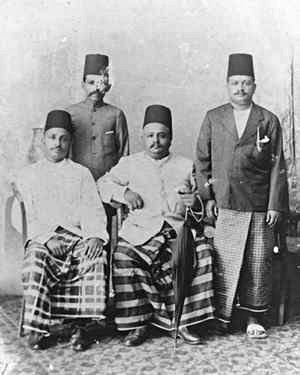
Sri Lankan Moors are an ethnic minority group in Sri Lanka, comprising 9.2% of the country's total population. Most of them are native speakers of the Tamil language who also speak Sinhalese as a second language. They are predominantly followers of Islam. The Sri Lankan Muslim community is divided as Sri Lankan Moors, Indian Moors and Sri Lankan Malays depending on their history and traditions.
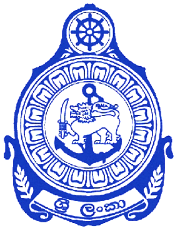
The Sri Lanka Navy (SLN) is the naval arm of the Sri Lanka Armed Forces and is classed as the country's most vital defence force due to its island geography and is responsible for the maritime defense of the Sri Lankan nation and its interests. The role of the Sri Lanka Navy is to conduct operations at sea for the defence of the nation and its interests and conduct prompt and sustainable combat operations at sea in accordance with the national policies.
The following is a chronological overview of the history of the Karavas and Karaiyars caste of Sri Lanka and India. Both communities were historically also known as Kurukulam, meaning Kuru clan.
Karava Heraldry includes a large number of Karava flags that have survived the ravages of time. Many are illustrated in E. W. Perera's monumental book titled 'Sinhalese Banners and Standards'.
The Mukkara Hatana is a 17th-century palm-leaf manuscript from Sri Lanka. Written in Sinhalese, the work celebrates the victory of the Karaiyars, also known as Karavas, over the Mukkuvars, who battled for the dominance of the western coast of Sri Lanka. The manuscript is now preserved in the Hugh Nevill collection at the British Museum.

The national emblem of Sri Lanka is used by the State of Sri Lanka and the Sri Lankan government in connection with the administration and government of the country. The current emblem has been in use since 1972 and created under the ideas and guidance of Nissanka Wijeyeratne. At the time, he was Permanent Secretary to the Ministry of Cultural Affairs and Chairman of the National Emblem and Flag Design Committee. The designer of the emblem was Venerable Mapalagama Wipulasara Maha Thera, and the artwork was by S. M. Seneviratne.
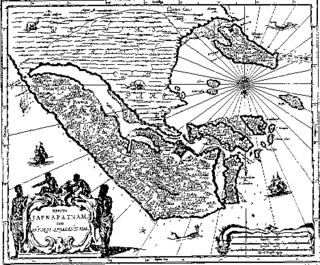
The Portuguese conquest of the Jaffna Kingdom occurred after Portuguese traders arrived at the rival Kotte Kingdom in the southwest of modern Sri Lanka in 1505. Many kings of Jaffna, such as Cankili I, initially confronted the Portuguese in their attempts at converting the locals to Roman Catholicism, but eventually made peace with them.
Indians in Sri Lanka refer to Indians or people of Indian ancestry living in Sri Lanka, such as the Indian Tamils of Sri Lanka.
Kulasekharapatnam is a town in the Thoothukudi district of Tamil Nadu, India.
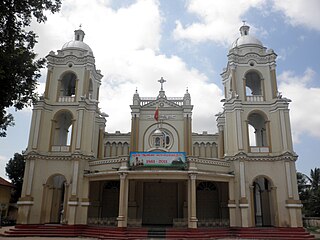
Gurunagar is a coastal village in Jaffna city in northern Sri Lanka. Gurunagar is also known as Karaiyur.
Mukkuvar is a maritime ethnic group found in the Indian states of Kerala, Tamil Nadu and the Eastern and North Western coastal regions of Sri Lanka. They are mostly found on the Malabar Coast, South Travancore Coast and Kanyakumari district, Tamil Nadu, who have traditionally been involved in fishing and other maritime activities.
References
- 1 2 3 Nayake of Tanjore sends an army of Vadugas with the king of the Karaiyars Sri Lanka and the Maldive Islands, By Chandra Richard De Silva, p.111 & 137
- ↑ The ancient 'Kaurava Pavilion' at Anuradhapura Archived 2016-03-03 at the Wayback Machine . defonseka.com. Retrieved 2012-08-01
- ↑ "Plate No.94 | Inscriptions of Sri Lanka" Archived 2016-03-04 at the Wayback Machine . Royalasiaticsociety.lk. Retrieved 2012-08-01
- ↑ MARAKKALAGE (KARAVA NAVY). karava.org. Retrieved 2012-08-01
- ↑ Yatra Dhoni Archived 2015-12-09 at the Wayback Machine . tacking-outrigger.com. Retrieved 2012-08-01
Queyroz Fr. The Temporal and Spiritual Conquest of Ceylaö,